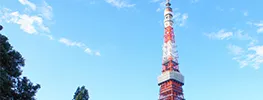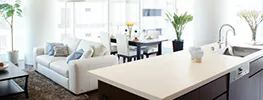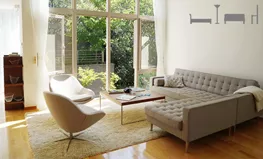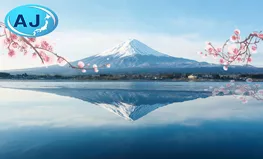Japanese Gardens in Tokyo – Nihon Teien
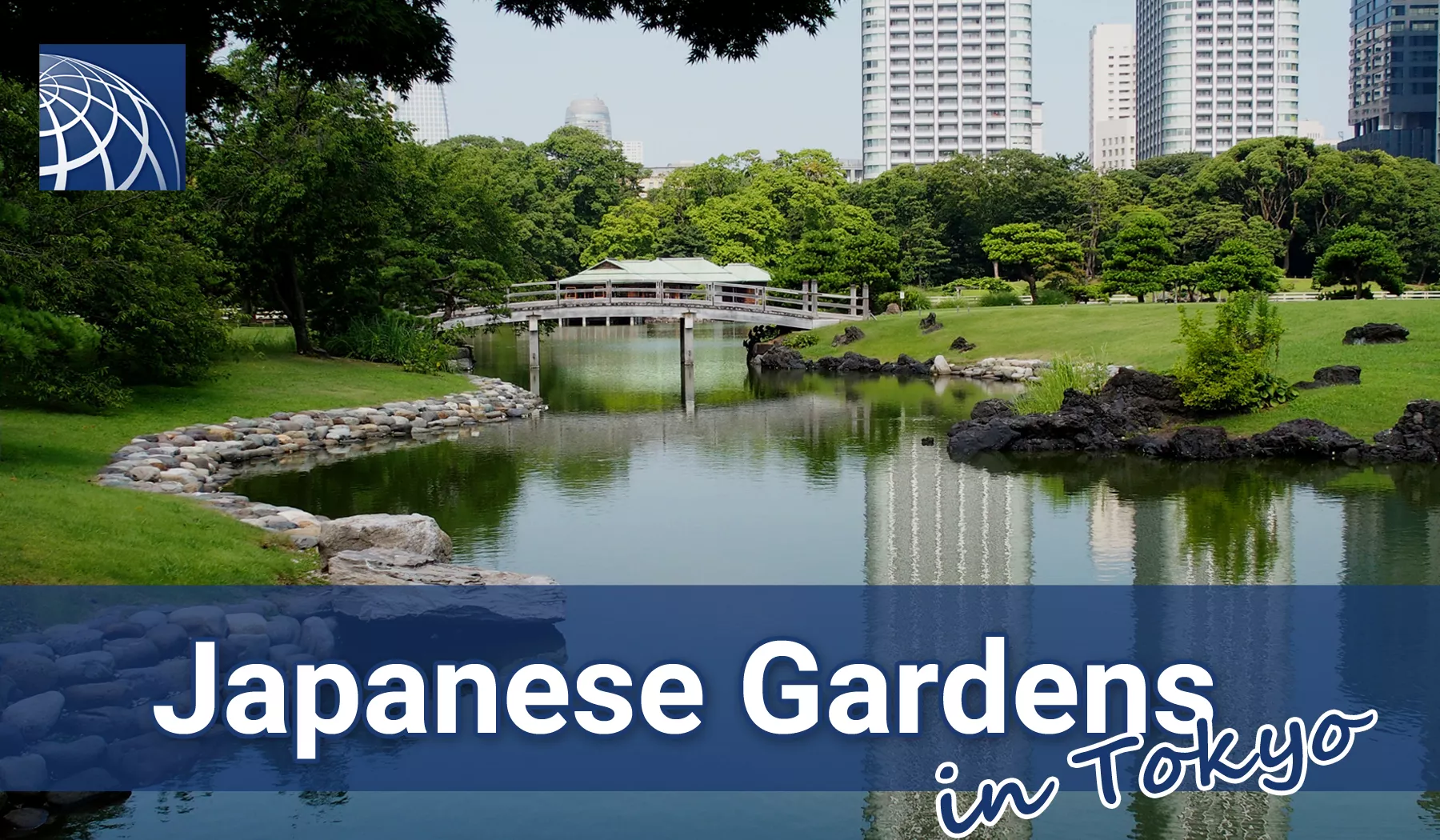
Tokyo is home to many traditional Japanese gardens (Nihon Teien) that offer the perfect escape to experience a moment of Zen or find some peace and quiet amid the hustle and bustle of daily life. Depending on the garden’s style, you may encounter a small Karesansui (dry landscape) or Sekitei (stone garden) with a bed of white sand and carefully arranged rocks. Or, you might find a spacious park filled with various trees and shrubs that appear to grow naturally, with a small shrine tucked away in one corner, a pond at the center, and winding walking paths that invite visitors to wander among the greenery.
If you’re interested in learning more about how Tokyo developed over the centuries, please refer toHistory of Tokyo.
Major Elements of Japanese Gardens
Water is a central theme in Japanese gardens. You’ll often find ponds, streams, and lakes—or white sand or gravel symbolizing water, carefully raked into wavy patterns.
Rocks are another major element, used to represent geographic features like miniature mountains or hills.
Stone lanterns and water basins, originally associated with Buddhist temples, have become common accents that add atmosphere to the garden.
Trees, flowers, and shrubs are found throughout and are often meticulously trimmed and shaped to create a specific scene or evoke a certain feeling.
Fish, especially nishiki-koi (colored carp) and goldfish, are a popular feature in the ponds and lakes of Japanese gardens.
Japanese Gardens in Tokyo
Below is a list of Japanese Gardens in Tokyo for you to enjoy.
Hamarikyu Onshi Teien

Located in Chuo Ward, these gardens are surrounded by a seawater moat connected to Tokyo Bay. It’s the only garden in Tokyo with a saltwater pond. Be sure to visit the teahouse on an island at the center of the pond, where you can enjoy matcha green tea and traditional Japanese sweets served in tea-ceremony style. For more details, please see our article on Hamarikyu Gardens.
Address: 1-1, Hamarikyu Teien, Chuo-ku, Tokyo
Access: 7 minutes walk from Shiodome Station or Tsukiji-shijo Station on Toei Oedo Line.
Website : https://www.tokyo-park.or.jp/park/hama-rikyu/
Koishikawa Korakuen

This is one of Tokyo’s oldest gardens, having been built during the Edo period (1600-1867). It is called “Korakuen” after a poem that advised rulers to put the happiness of the people before his own. It has a beautiful network of walking paths with carefully landscaped ponds, stones, manmade hills, and trees intended to replicate Japanese and Chinese scenery. Combine this with Tokyo Dome and other skyscrapers in the background and you have a recipe for a perfect image of Japan in miniature, nature and modernity coexisting peacefully. 
Address: 1-6-6, Koraku, Bunkyo-ku, Tokyo
Access: 3 minutes walk from Iidabashi Station on Oedo Line. 8 minutes walk from Iidabashi Station on Sobu, Tozai, Yurakucho, Namboku Lines.
Website : https://www.tokyo-park.or.jp/park/koishikawakorakuen/
Rikugien Garden

This is considered to be one of Tokyo’s most beautiful gardens, alongside the above-mentioned Korakuen. This is a good example of a “strolling garden.” As you walk along its large network of paths, you can view 88 miniature scenes reproduced from famous Japanese poems. Also, be sure to visit Fukiage Chaya teahouse and have some tea and dessert when you visit!
Address: 6-16-3, Hon-Komagome, Bunkyo-ku, Tokyo
Access: 7 minutes from Komagome Station on JR Yamanote and Namboku Lines.
Website : https://www.tokyo-park.or.jp/park/rikugien/
Shinjuku Gyoen

This garden combines multiple garden styles: French Formal, English Landscape, and Japanese traditional in a unique mixture not often encountered. The gardens contain more than 20,000 trees of many varieties, including 1,500 cherry trees. As such, this is a popular spot to for hanami parties during the cherry blossom season so don’t miss out.
Address: 11 Naito-machi, Shinjuku-ku, Tokyo
Access: 5 minutes walk from Shinjuku-gyoemmae Station on Marunouchi Line or 10 minutes walk from Shinjuku Station.
Website : http://www.env.go.jp/garden/shinjukugyoen/english/index.html
Kyu Shiba-Rikyu Gandens
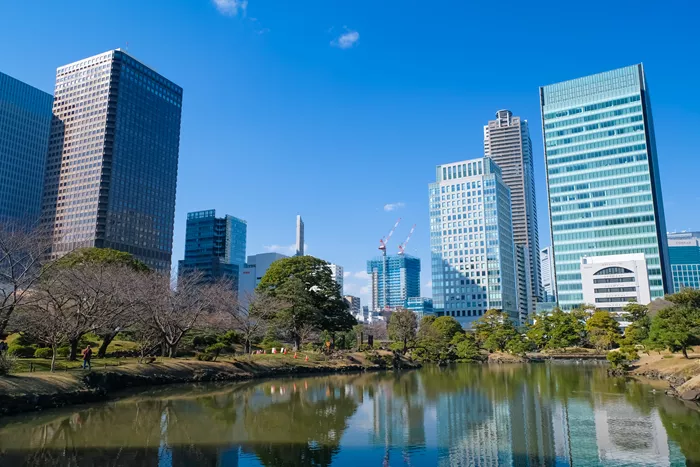
This garden has a long history, dating back to the Edo period like Korakuen. This garden was purchased by the Imperial Household Agency in 1875 and it became an Imperial residence with a European-style guest house. The entire property was destroyed by fire in the Great Kanto earthquake on 9/1/1923 and then donated to the city of Tokyo in 1924. It was re-opened to the public on 4/20/1924 and has been “a place of scenic beauty and special historic interest” as designated by the Government of Japan ever since.
Address: 1-4-1, Kaigan, Minato-ku, Tokyo
Access: 1 minute walk from Hamamatsu-cho Station on JR Keihin Tohoku and Yamanote Lines or 3 minutes walk from Daimon Station on Toei Oedo Line.
Website : https://www.tokyo-park.or.jp/park/kyu-shiba-rikyu/
Kyu-Furukawa Gardens
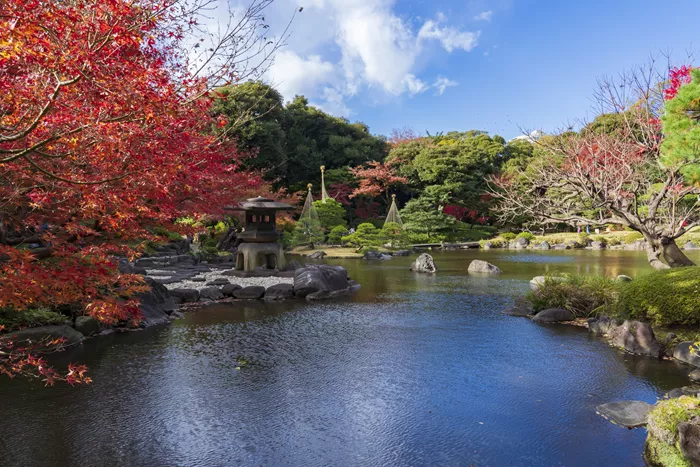
At Kyu-Furukawa Gardens, you can relax in a beautiful Japanese garden or spend some time in a Western-style garden with magnificent roses. There's also a tea room, a "karetaki" (dry waterfall), a Western-style building designed by the renowned Josiah Conder, and a pond shaped like a Japanese kanji (character) that means "heart," etc. This is a fantastic place to visit to enjoy both Western and Japanese style gardens in one location.
Address: 1-27-39, Nishigahara, Kita-ku, Tokyo
Access: 5 minutes walk from Nishigahara Station on Nanboku Line or Kaminakazato Station on JR Keihin Tohoku Line.
Website : https://www.tokyo-park.or.jp/park/kyu-furukawa/
Mejiro Garden
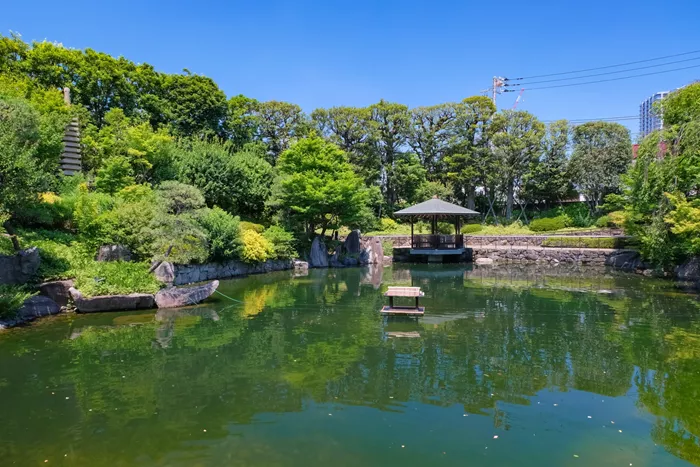
Mejiro Garden may appear small in comparison to its many well-known counterparts, but that does not make it any less enjoyable. At Mejiro Garden, you can see a building made in Japanese "sukiya" style, a 500-square-meter pond filled with Japanese colored carps, a 4-meter-high waterfall, etc. Spending time in this lovely Japanese garden will allow you to relax and forget about the hustle and bustle of city life.
Address: 3-20-18, Mejiro, Toshima-ku, Tokyo
Access: 5 minutes walk from Mejiro Station on JR Yamanote Line.
Website : https://mejiro-garden.com
Ninomaru Garden
Ninomaru Garden is a Japanese garden that is part of the East Gardens of the Imperial Palace. It has been open to the public since 1968 and is a fantastic place to visit when exploring the East Gardens. For more information on the opening hours and other details, please check the official website.
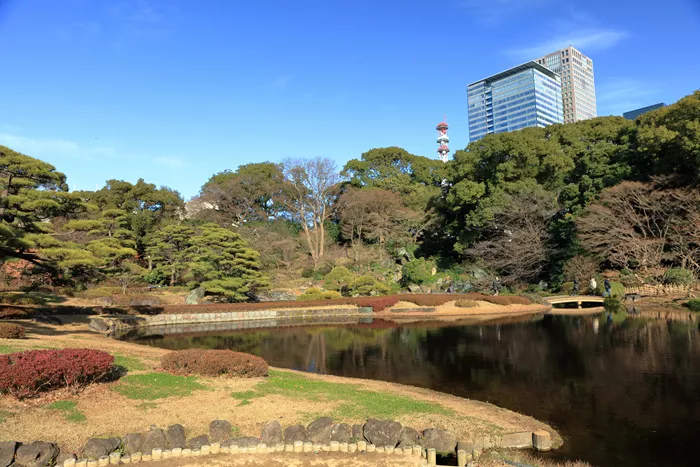
Address: 1-6, Chiyoda, Chiyoda-ku, Tokyo
Access: 5 minutes walk from Takebashi Station on Tozai Line or Otemachi Station.
Website : https://www.kunaicho.go.jp/e-event/higashigyoen02.html
Japanese Garden at Hotel New Otani Tokyo
The last entry on our list is a magnificent Japanese garden at the well-known Hotel New Otani Tokyo. There, you can enjoy nature's tranquil beauty while viewing Japanese koi in a pond, a stone garden, and so on. The garden is illuminated at night, making it a fantastic place to visit after the sun goes down. Please note that the garden is open from 6 am to 10 pm.
Address: 4-1 Kioicho, Chiyoda-ku, Tokyo
Access: 3 minutes walk from Nagatacho Station on Nanboku and Hanzomon Lines or Akasaka-Mitsuke station on Marunouchi and Ginza Lines.
Website : https://www.newotani.co.jp/en/tokyo/garden/
Bonsai Museum in Tokyo
Shunkaen Bonsai Museum
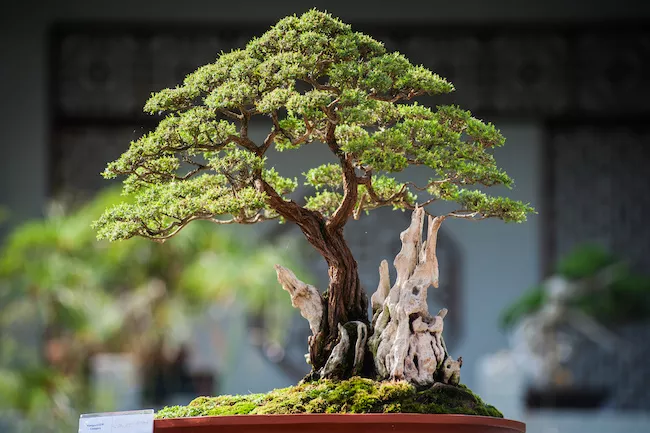
For fans of bonsai, or the art of cultivating miniature trees in a pot, the Shunkaen Bonsai Museum is not to be missed. Even if you know nothing about bonsai, here you can try your hand at growing one at a bonsai class taught by Kunio Kobayashi, an award-winning professional bonsai artist who runs the museum and has taught international students throughout his 30-year career. Classes range from short-term experience classes to weekly or a month-long apprenticeship class. Learn about the beauty of bonsai and you may find yourself growing one at home after a visit to this privately-run Tokyo museum.
Address: Shinbori 1-29-16,Edogawa-ku,Tokyo,Japan
Access: Toei-Shinjuku Line, Mizue sta.
Website: http://www.kunio-kobayashi.com/en/syunkaen.html
In this article, we have introduced Japanese gardens that will provide you with an oasis of tranquility in Tokyo. The capital of Japan is also a home to a number of bamboo forests that you can read about here. If you live in Tokyo and would like to further explore the local nature, be sure to check the following article: "Hiking Around Tokyo: 6 Great Spots for Peak Outdoor Fun."
If you are interested in Tokyo History, please read History of Tokyo.

- Rental Apartments & Houses in Tokyo
- Listings of popular and luxurious rental apartments, condominiums, and houses
- designed with expats in mind.

- Apartments & Houses for Sale in Tokyo
- Listings of apartments, condominiums, and houses available for purchase in Tokyo.






